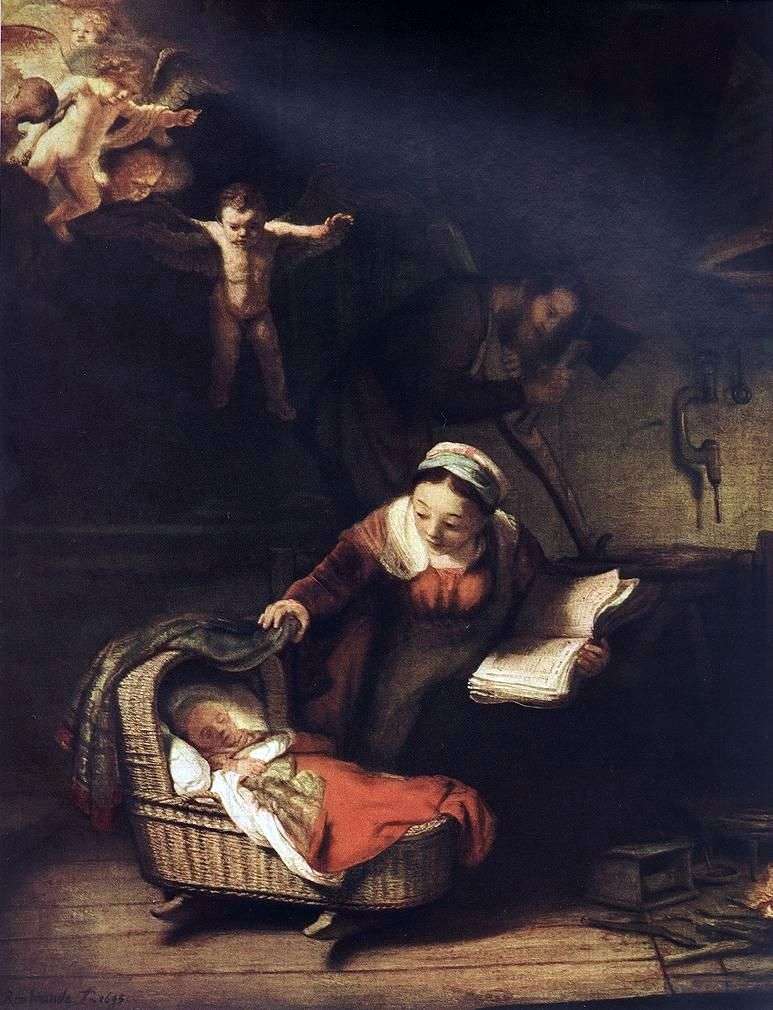
During the 40s, Rembrandt addressed the theme of the holy family several times. One of the best solutions of this theme is the Hermitage painting “The Holy Family”, created by the artist in 1645. The gospel scene gives the viewer a lot of associations with the daily life of the people, the modern Rembrandt. Silence and peace are disturbed only by the familiar sounds of life at home. Burning firewood crackles, a quiet monotonous rattling of a carpenter’s ax is heard.
The room is shrouded in a delicate twilight; light is gently pouring in from various sources, gliding gently across the face of Mary, lighting up the cradle, giving the depicted hue of spirituality. The child slightly stirred in his sleep, and the woman, obeying the subtle maternal instinct, breaks away from reading, lifts the canopy and looks anxiously at the baby. She – very sensitive, very alert. Essentially, the great humanity and penetration of the picture is created only by one of its views.
The light height of the moment captured is also reflected in the fact that angels are silently descending to the mother and the boy. In this work, the artist seems to have something in common with the masters of the Dutch household genre. But unlike them, it’s not the quiet comfort of everyday life that concerns Rembrandt in the first place, but the great beauty of simple human relationships. When observing a woman sitting at the cradle of her son, all he needed was to see only one of her quivering movements, a minute turn of the head, an anxious look, in order to feel the poetry of maternal feeling.
 Holy Family with Six Angels by Nicolas Poussin
Holy Family with Six Angels by Nicolas Poussin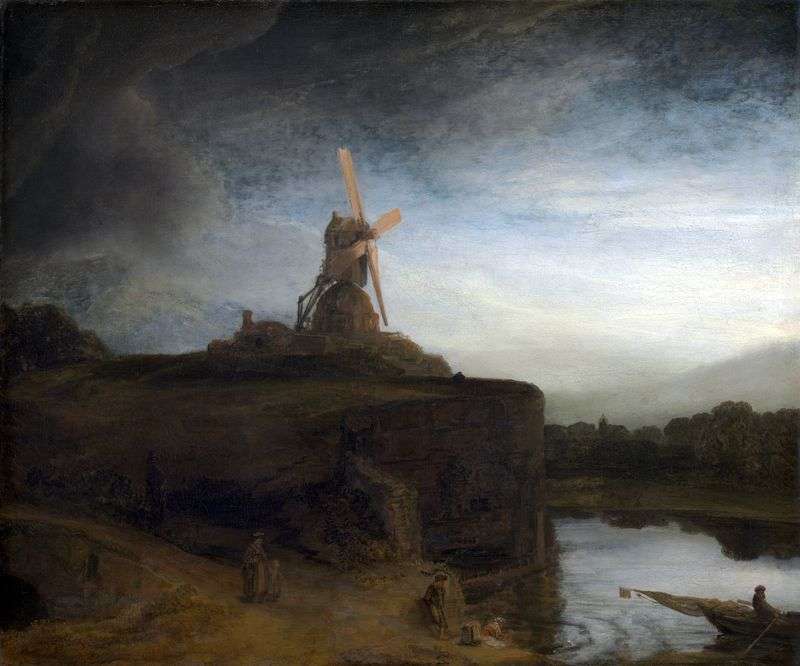 The Mill by Rembrandt Harmens Van Rhine
The Mill by Rembrandt Harmens Van Rhine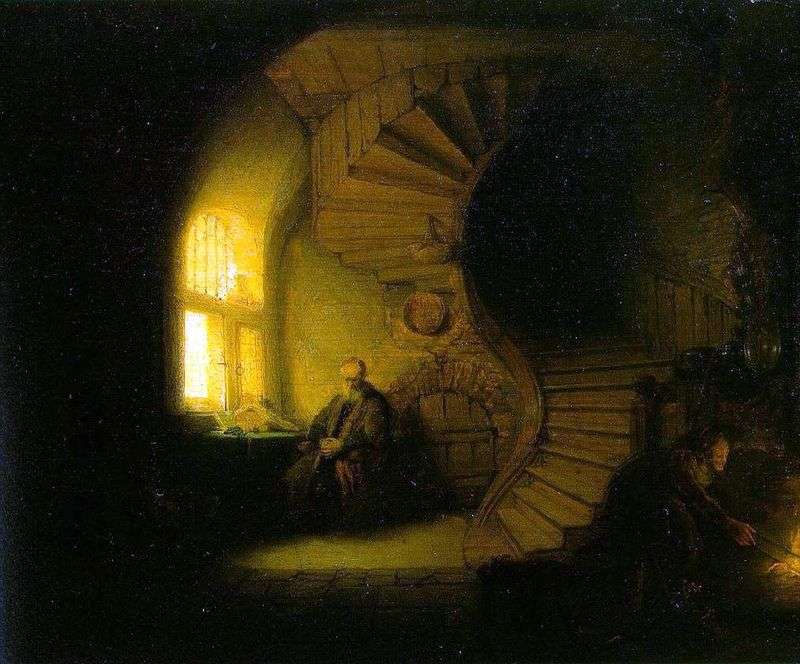 Philosopher Meditating in His Room by Rembrandt Harmens Van Rhine
Philosopher Meditating in His Room by Rembrandt Harmens Van Rhine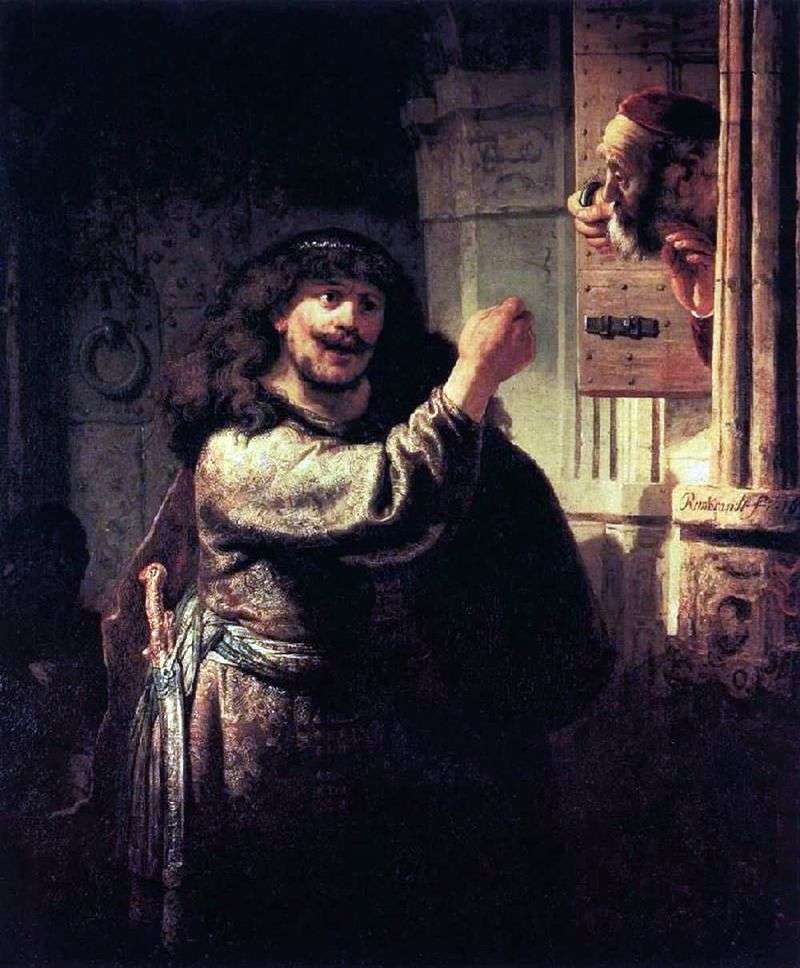 Samson threatens to test by Rembrandt Harmens Van Rhine
Samson threatens to test by Rembrandt Harmens Van Rhine Portrait of Saskia van Eilebürch by Rembrandt Harmens Van Rhine
Portrait of Saskia van Eilebürch by Rembrandt Harmens Van Rhine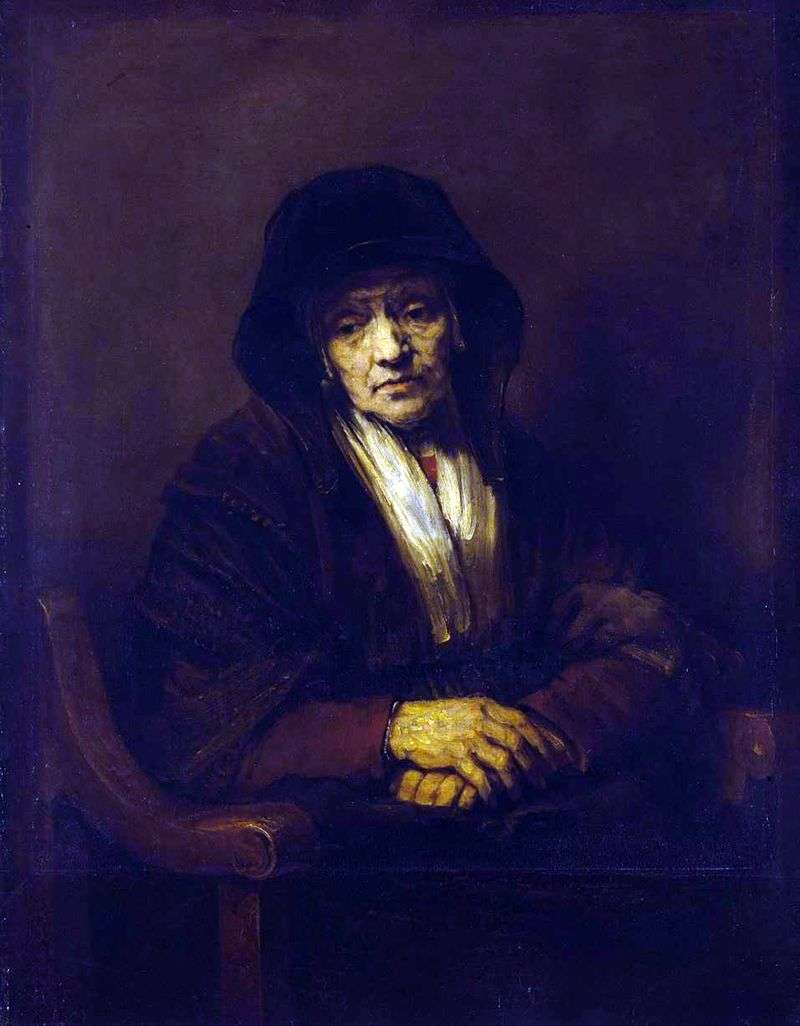 Portrait of an Old Woman by Rembrandt Harmens Van Rhine
Portrait of an Old Woman by Rembrandt Harmens Van Rhine Still Life with Peacock by Rembrandt Harmens Van Rhine
Still Life with Peacock by Rembrandt Harmens Van Rhine Archangel Raphael, leaving the family of Tobiah by Rembrandt Harmens Van Rhine
Archangel Raphael, leaving the family of Tobiah by Rembrandt Harmens Van Rhine